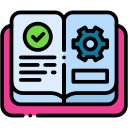Balancing Synchronous, Asynchronous, and Blended Paths
Use synchronous time for debate, coaching, and complex practice—not long lectures. Open with a provocative scenario, then send participants into small groups to decide. End with commitments and timelines. Ask attendees to share one decision they will test within forty-eight hours.
Balancing Synchronous, Asynchronous, and Blended Paths
Offer short videos, readings, and interactive activities people can complete when their calendar allows. Include clear outcomes, estimated time, and optional deep dives. Encourage learners to post reflections in a shared thread, and spotlight insightful responses in the next cohort update.









